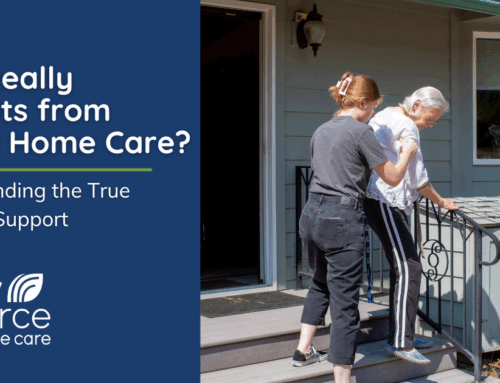It’s not news anymore. By 2030, the older population of the US (age 65 and older) will be about 72.1 million, more than twice the number of seniors than in 2000.
The spike in the age 65+ population represents a tremendous shift in U.S. demographics (yes, we baby boomers have gotten older – a lot older) and has strained the ability of existing medical and social services to meet the needs of the expanding senior population. But that’s where American ingenuity kicks in. In the field of aging services, new models of assistance are being imagined and created. Let’s take a look at one.
The vast majority of seniors (over 90%) voice a preference for staying at home as they age. But most of us will at some point need some assistance in order to stay home. Home care is one option. A new trend developing, the “Virtual Village” could also help many more seniors to live independently at home.
The “Virtual Village” (sometimes referred to as an “Elder Village” or “Senior Village”) works within existing neighborhood(s) and turns these neighborhoods into a type of supportive retirement community. It is a non-profit organization, usually staffed by volunteers (often with a small paid staff), that provides services to the elderly in order to allow them to remain in their homes as they age. According to a fact sheet put out by the AARP “The Village offers an option for meeting the needs of the growing older population by making it possible for people to stay in their communities and age in place.” Neighborhood residents create villages to help coordinate and deliver services within their communities. This consumer-driven and person-centered approach can help delay or even prevent the need for institutional care.
Virtual Villages in Seattle
Northeast Seattle Together, or NEST, is one of the growing network of Villages in our state. NEST Executive Director, Judy Kinney, says that today NEST includes 14 neighborhoods and serves 125 members. According to Ms. Kinney, her office (1 full-time and 2 part-time staff) fields 100 calls each month from members with various requests for assistance and manages 150 volunteers who contribute over 300 hours each month.
“We provide three distinct services to our members, and they can use our services as much or as little as they want,” says Ms. Kinney. “We call the first service ‘neighborly little things.’ We match a volunteer with a member who needs help with something like getting a ride to a doctor’s appointment, changing a light bulb, going on a walk, weeding the garden or helping with computer or internet use. The second type of service is what we call ‘in-home help.’ This includes any service or help within their home that a member needs outside of what our volunteers can provide. We maintain a list of ‘business partners’ who we know we can trust and who will provide excellent services to our members. Our list includes repair people like plumbers, electricians or roofers; financial advisors and attorneys; doctors; and businesses that provide home care and home health care. When a member calls needing help we will speak with them about their specific need, provide the referral and then – and this is where our service is most unique – we follow-up with our member to see how the referral worked out. The last of the three types of service we provide is ‘enrichment.’ This is one of the real community building aspects of NEST. Volunteers organize potlucks, walking groups, book clubs, outings and so on. All it takes is a member with a request or a volunteer with an idea.”
Although NEST was formed in order to help seniors age at home, “we don’t define ‘home’ for anyone,” continues Kinney. “ If a member moves into a nursing home they can still keep their membership in NEST. We don’t assume the family home is best for everyone and we are not going to drop a member because their needs change as they age.”
“The model of the Virtual Village can work well in a variety of settings. Whether the community is rich or poor, rural or urban, it’s a very adaptable system. At the most basic level, people want to connect with and know their neighbors. At heart, it is a community development model with building community and serving the aging population acting as the catalyst.”
For Judy Kinney, one of the most gratifying aspects of working with NEST has been the volunteer involvement. “The number of volunteers and their generosity far exceeds anything I thought possible,” she said. “Their dedication goes far beyond what I imagined.”
And what’s next for NEST? Says Kenny, “We’d like to grow our membership to 175 by the end of the year. We want to serve more members and increase the diversity of our members all while keeping NEST feeling very personal. We are also looking at other housing options. Because of the Seattle economy, many of the seniors in our neighborhoods are what we call ‘house rich.’ They may want to stay in their home, but the size and cost are too much. As we move forward, we may explore housing options like co-housing in our neighborhoods.”
There is no one size fits all solution to caring for the 72,000,000 plus seniors who will need assistance in the coming decades. For Judy Kinney and NEST, we could say “It takes a village to care for a senior.”
To learn more about the national Virtual Village model go to the website of the Village to Village Network. To learn more about Northeast Seattle Together go to the NEST website or call 206 525-6378.






